
Tea production in Sri Lanka
Encyclopedia
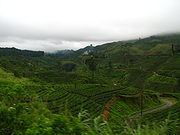

Economy of Sri Lanka
With an economy worth $56 billion , and a per capita GDP of about $7000 , Sri Lanka has mostly had strong growth rates in recent years...
and the world market. The country is the world's fourth largest producer of tea
Tea
Tea is an aromatic beverage prepared by adding cured leaves of the Camellia sinensis plant to hot water. The term also refers to the plant itself. After water, tea is the most widely consumed beverage in the world...
and the industry is one of the country's main sources of foreign exchange and a significant source of income for laborers, with tea accounting for 15% of the GDP, generating roughly $700 million annually. In 1995 Sri Lanka was the world's leading exporter of tea, (rather than producer) with 23% of the total world export, but it has since been surpassed by Kenya
Kenya
Kenya , officially known as the Republic of Kenya, is a country in East Africa that lies on the equator, with the Indian Ocean to its south-east...
. The tea sector employs, directly or indirectly over 1 million people in Sri Lanka, and in 1995 directly employed 215,338 on tea plantations and estates. The humidity, cool temperatures, and rainfall in the country's central highlands provide a climate that favors the production of high quality tea. The industry was introduced to the country in 1867 by James Taylor
James Taylor (Ceylon)
James Taylor was a British citizen who introduced the tea plantation in Sri Lanka . He arrived to Sri Lanka in 1852 and settled down in Loolecondera estate in Kandy. He lived in Sri Lanka more than half of his lifetime 57 years until his death...
, the British planter who arrived in 1852.
Pre-Tea era
CinnamonCinnamon
Cinnamon is a spice obtained from the inner bark of several trees from the genus Cinnamomum that is used in both sweet and savoury foods...
was the first crop to receive government sponsorship in Ceylon, while the island was under Dutch control
Dutch period in Ceylon
Ceylon was a governorate of the Dutch East India Company between 1658 and 1798 on the island currently known as Sri Lanka.In the early 17th century, Sri Lanka was partly ruled by the Portuguese and the Sinhala kingdom, who were constantly battling each other...
. During the administration of Dutch governor Iman Willem Falck, cinnamon plantations were planted in Colombo
Colombo
Colombo is the largest city of Sri Lanka. It is located on the west coast of the island and adjacent to Sri Jayawardenapura Kotte, the capital of Sri Lanka. Colombo is often referred to as the capital of the country, since Sri Jayawardenapura Kotte is a satellite city of Colombo...
, Maradana
Maradana
Maradana is a suburb of Colombo city, Sri Lanka. Maradana is the site of Maradana Railway Station, one of the primary railway hubs in the country, serving intercity rail and commuter rail. Maradana also has many railway yards and running sheds...
, and Cinnamon Gardens
Cinnamon Gardens
Cinnamon Gardens is a suburb in Colombo, Sri Lanka located 3 kilometers south-east from Colombo city centre. Cinnamon Gardens is named from the former Cinnamon plantation in this area. In the year 1789, there were of Cinnamon trees in Cinnamon Gardens...
in 1769. The first British governor Frederick North
Frederick North, 5th Earl of Guilford
Frederick North, 5th Earl of Guilford , known as the Honourable Frederick North until 1817, was a British politician and colonial administrator....
prohibited private cinnamon plantations, thereby securing monopoly on cinnamon plantations for the East India Company
East India Company
The East India Company was an early English joint-stock company that was formed initially for pursuing trade with the East Indies, but that ended up trading mainly with the Indian subcontinent and China...
. However, an economic slump in the 1830s in England and elsewhere in Europe affected the cinnamon plantations in Ceylon. This resulted in them being decommissioned by William Colebrooke
William MacBean George Colebrooke
Sir William MacBean George Colebrooke was a career soldier and colonial administrator who became lieutenant governor of New Brunswick in 1841.- External links :*...
in 1833. Finding cinnamon unprofitable, the British turned to coffee
Coffee
Coffee is a brewed beverage with a dark,init brooo acidic flavor prepared from the roasted seeds of the coffee plant, colloquially called coffee beans. The beans are found in coffee cherries, which grow on trees cultivated in over 70 countries, primarily in equatorial Latin America, Southeast Asia,...
.
By 1825 the Ceylonese already had a knowledge of coffee. They started planting coffee as a garden crop and the first coffee plantation was started in Baddegama in Galle District
Galle District
Galle is a district in Southern Province, Sri Lanka.- Geological background :Its area is , in which is water and is land. Galle District bounded on the North by Benthara river, South and West by the Indian Ocean and East by Matara and Ratnapura Districts. Topography of Galle District is very...
. Although this venture failed due to the unsuitability of the area for the crop, George Bird became the first to start planting coffee on a commercial scale. After Bird began his coffee plantation in Singhapitiya
Singhapitiya
Singhapitiya is a village located in Central Province, Sri Lanka near the town of Gampola. One of the earliest Coffee plantations of Sri Lanka, Mariawatte was situated nearby Singhapitiya.-References:...
, Gampola
Gampola
Gampola is a town located near Kandy in the Central Province of Sri Lanka. Gampola was made the capital city of the island by King Buwanekabahu IV, who ruled for four years in the mid fourteenth century. The last king of Gampola was King Buwanekabahu V. He ruled the island for 29 years. A separate...
governor Edward Barnes
Edward Barnes (British Army officer)
Lieutenant General Sir Edward Barnes, GCB was a British soldier who became governor of Ceylon.-Military career:Barnes joined the 47th Regiment of Foot in 1792, and quickly rose to field rank. He was promoted to lieutenant-colonel in 1807, serving in the Invasion of Martinique in 1809, and colonel...
also started a plantation in Gannoruwa. The demand and high price in the European market for coffee fueled the rush of coffee planting. Investors flocked to Ceylon from overseas and around 100000 ha (386 sq mi) of rain forest was cleared to pave the way for coffee plantations. The term "Coffee rush" was coined to describe this developing situation in 1840. In 1869 the coffee industry was still thriving in Ceylon but shortly afterwards, coffee plantations were devastated by a fungal disease called Hemileia vastatrix
Hemileia vastatrix
Hemileia vastatrix is a fungus of the order Uredinales that causes coffee rust, a disease that is devastating to coffee plantations...
or coffee rust, better known as "coffee leaf disease" or "coffee blight". The planters nicknamed the disease "devastating Emily" when it was first identified in the Madolsima area in 1869. Production dipped rapidly as the disease set in and every effort failed to revive coffee production. Of 1700 coffee planters, only 400 remained on the island as the rest left for their home countries. The coffee crop died, marking an end of an era when most of the plantations on the island were dedicated to producing coffee beans. Planters experimented with cocoa and cinchona
Cinchona
Cinchona or Quina is a genus of about 38 species in the family Rubiaceae, native to tropical South America. They are large shrubs or small trees growing 5–15 metres in height with evergreen foliage. The leaves are opposite, rounded to lanceolate and 10–40 cm long. The flowers are white, pink...
as alternative crops but failed due to a bug, Heloplice antonie, so that in the 1870s virtually all the remaining coffee planters in Ceylon switched to the production and cultivation of tea. By the year 1900, only 11392 acres (46 km²) were still under coffee cultivation.

Foundation of tea plantations

Botanical Garden of Peradeniya
Royal Botanical Garden, Peradeniya is located close to the city of Kandy in the Central Province of Sri Lanka. It is renowned for its collection of a variety of orchids. It includes more than 300 varieties of orchids, spices, medicinal plants and palm trees. Attached to it is the National...
in Peradeniya
Peradeniya
Peradeniya is a town of about 50,000 inhabitants on the outskirts of Kandy in Sri Lanka. It is situated on the A1 main road connecting Kandy and Colombo, just a few kilometres west of Kandy....
for non-commercial purposes. Further experimental tea plants were brought from Assam
Assam
Assam , also, rarely, Assam Valley and formerly the Assam Province , is a northeastern state of India and is one of the most culturally and geographically distinct regions of the country...
and Calcutta in India
India
India , officially the Republic of India , is a country in South Asia. It is the seventh-largest country by geographical area, the second-most populous country with over 1.2 billion people, and the most populous democracy in the world...
to Peradeniya in 1839 through the East India Company and over the years that followed. In 1839 the Ceylon Chamber of Commerce
Ceylon Chamber of Commerce
The Ceylon Chamber of Commerce is the oldest and one of leading business chambers in Sri Lanka.-History:The Ceylon Chamber of Commerce was established on March 25, 1839, when Sri Lanka was known as Ceylon under British rule.Rt. Hon...
was also established followed by the Planters' Association of Ceylon in 1854. In 1867, James Taylor marked the birth of the tea industry in Ceylon by starting a tea plantation in Loolecondera
Loolecondera
The Loolecondera estate is the first tea plantation estate in Sri Lanka started on 1867 by the Scottish nationalist James Taylor , it is situated in Kandy, Sri Lanka.-James Taylor and Loolecondera:...
estate in Kandy
Kandy
Kandy is a city in the center of Sri Lanka. It was the last capital of the ancient kings' era of Sri Lanka. The city lies in the midst of hills in the Kandy plateau, which crosses an area of tropical plantations, mainly tea. Kandy is one of the most scenic cities in Sri Lanka; it is both an...
in 1867. He began the tea plantation on an estate of just 19 acres (76,890 m²). In 1872 he started a fully equipped tea factory in the same Loolecondera estate and that year the first sale of Loolecondra tea was made in Kandy. In 1873, the first shipment of Ceylon tea, a consignment of some 23 lb (10.4 kg), arrived in London.
Sir Arthur Conan Doyle
Arthur Conan Doyle
Sir Arthur Ignatius Conan Doyle DL was a Scottish physician and writer, most noted for his stories about the detective Sherlock Holmes, generally considered a milestone in the field of crime fiction, and for the adventures of Professor Challenger...
remarked on the establishment of the tea plantations, “…the tea fields of Ceylon are as true a monument to courage as is the lion at Waterloo”.
Soon enough plantations surrounding Loolecondera such as Hope, Rookwood and Mooloya situated to the east and Le Vallon and Stellenberg to the south began transforming into tea plantations and were amongst the first tea estates to be established on the island.
The total population in Sri Lanka according to the census of 1871 was 2,584,780. The 1871 demographic distribution and population in the plantation areas is given below:
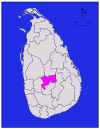
| District | | Total population | | No. of estates | | Estate population | | % of population on estates |
|---|---|---|---|---|
| Kandy District Kandy District Kandy District is a district of the Central Province of Sri Lanka. Its area is 1906.3 km². The capital of the district is Kandy.- Demographics :... |
258,432 | 625 | 81,476 | |
| Badulla District Badulla District Badulla is a district in Uva Province, Sri Lanka. The entire land area of the Badulla district is 2,861 km² and total population is 837,000. The district is bounded by the districts of Monaragala and Rathnapura on the East & South, by Ampara and Kandy districts on the North and by Nuwara... |
129,000 | 130 | 15,555 | |
| Matale District Matale District Matale District is a district in Central Province, Sri Lanka. Its area is 1,987 km².- Demographics :The population according to 2001 census is 441,328. 80.1 % of the population are Sinhalese, 8.7 % Sri Lankan Moors, 5.5 % native Sri Lankan tamils and 5.3 % tamils of... |
71,724 | 111 | 13,052 | |
| Kegalle District Kegalle District Kegalle is a district in Sabaragamuwa Province, Sri Lanka. Its area is 1,663 km². It was a former Dissavani of Sri Lanka. Has a population of 785,524 according to census 2001.-Physical Information:... |
105,287 | 40 | 3,790 | |
| Sabaragamuwa Sabaragamuwa Province Sabaragamuwa, is a province of Sri Lanka, and contains two main cities: Ratnapura and Kegalle. Sabaragamuwa University is in Belihuloya. It is named after its former indigenous inhabitants, namely the Sabara, an indic term for hunter gatherer tribes, a term seldom used in ancient Sri... |
92,277 | 37 | 3,227 | |
| Nuwara Eliya District Nuwara Eliya District Nuwara Eliya District is a district in Central Province, Sri Lanka. Its area is 1,228 km². Nuwara Eliya town is a tourist attraction.-Demographics:... |
36,184 | 21 | 308 | |
| Kurunegala District Kurunegala District Kurunegala is a district in North Western Province, Sri Lanka. Its area is 4,771 km².... |
207,885 | 21 | 2,393 | |
| Matara District Matara District Matara is a district in Southern Province, Sri Lanka. Its area is 1,246 km². It is represented in the Sri Lankan Parliament following the Sri Lankan parliamentary election, 2010 by former Sri Lankan national Cricketer Sanath Jayasuriya who stood for the United People's Freedom Alliance.... |
143,379 | 11 | 1,072 | |
| Total | 1,044,168 | 996 | 123,654 | |
Growth and history of commercial production

Kandy in 1880, which was the centre of the coffee culture of Ceylon at the time. Although he knew little about coffee, he had considerable knowledge in regards to tea cultivation and he is considered one of the pioneer tea planters in Ceylon. By 1883, Trafford was the resident manager of numerous estates in the area, now switching to tea production. By the late 1880s almost all the coffee plantations in Ceylon had been converted to tea. Similarly, coffee stores rapidly converted to tea factories in order to meet the increasing demand for tea. Technology for processing tea developed in the 1880s, after the manufacture of the first "Sirocco" tea drier by Samuel C. Davidson in 1877 and the manufacture of first tea rolling machine by John Walker & Co in 1880 set the conditions that would be required to make commercial tea production a reality. This was consolidated in 1884 with the construction of the Central Tea Factory on Fairyland Estate (Pedro) in Nuwara Eliya
Nuwara Eliya
Nuwara Eliya , meaning "city on the plain " or "city of light", is a town in the central highlands of Sri Lanka with a picturesque landscape and temperate climate. It is located at an altitude of 1,868 m and is considered to be the most important location for Tea production in Sri Lanka...
. As tea production in Ceylon progressed, new factories were constructed, introducing innovative methods of mechanization brought from England. Marshals of Gainsborough of Lancashire, the Tangyes Machine Company of Birmingham, and Davidsons of Belfast supplied the new tea factories with machinery which they still supply today.
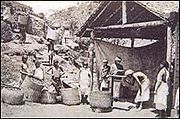
World's Columbian Exposition
The World's Columbian Exposition was a World's Fair held in Chicago in 1893 to celebrate the 400th anniversary of Christopher Columbus's arrival in the New World in 1492. Chicago bested New York City; Washington, D.C.; and St...
in 1893. That same year the tea established a record price of £36.15 per lb at the London Tea Auctions. In 1894 the Ceylon Tea Traders Association was formed and today virtually all tea produced in Sri Lanka is conducted through this association and the Ceylon Chamber of Commerce. In 1896 the Colombo Brokers' Association was formed and in 1915 Thomas Amarasuriya became the first Ceylonese to be appointed as Chairman of the Planters' Association. In 1925 the Tea Research Institute was established in Ceylon to conduct research into maximising yields and methods of production. By 1927 tea production in the country exceeded 100,000 metric tons (100000 metric tons (110,231 ST) short tons), almost entirely for export. A 1934 law prohibited the export of poor quality tea. The Ceylon Tea Propaganda Board was formed in 1932.
In 1938 the Tea Research Institute commenced work on vegetative propagation at St. Coombs Estate in Talawakele
Talawakele
Talawakele is a town in Nuwara Eliya District in Sri Lanka. It is the center of Dimbula tea planting district, the largest tea growing area in Sri Lanka. It is situated on A7 Avissawella-Nuwara Eliya highway. The altitude of Talawakele is 3,932 feet. Talawakele railway station is one of the major...
, and by 1940 it had developed a biological control (a parasitic wasp, Macrosentus homonae) to suppress the Tea Tortrix caterpillar, which had threatened the tea crop. In 1941 the first Ceylonese tea broking house, M/s Pieris & Abeywardena, was established, and in 1944 the Ceylon Estate Employers' Federation was founded. On October 1, 1951, export duty on tea was introduced and in 1955 the first clonal tea fields began cultivation. In 1958 the State Plantations Corporation was established, and on June 1, 1959, Ad Valorem Tax was introduced for teas sold at the Colombo auctions.
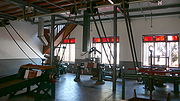
During 1971–1972, the government of Sri Lanka nationalized the tea estates owned by the British companies. The state took over some 502 privately owned tea, rubber and coconut estates, and in 1975 it nationalized the Rupee and Sterling companies. Land reform in Sri Lanka meant that no cultivator was allowed to own more than 50 acres (202,343 m²) for any purpose. In 1976 the Sri Lanka Tea Board was founded as were other bodies, such as the Janatha Estate Development Board (JEDB), Sri Lanka State Plantation Corporation (SLSPC) and the Tea Small Holding Development Authority (TSHDA) to supervise the state's acquired estates. It was in 1976 that the export of tea bags also commenced.
In 1980 Sri Lanka became the official supplier of tea at the 1980 Moscow Summer Olympic Games, in 1982 at the 12th Commonwealth Games in Brisbane and again in 1987 at Expo 88 in Australia. In 1981, the import of teas for blending and re-exports was introduced and in 1982 the production and export of green tea
Green tea
Green tea is made solely from the leaves of Camellia sinensis that have undergone minimal oxidation during processing. Green tea originates from China and has become associated with many cultures throughout Asia. It has recently become more widespread in the West, where black tea is traditionally...
commenced in Sri Lanka. CTC teas
Crush, Tear, Curl
Crush, Tear, and Curl is a method of processing black tea, similar to that of orthodox tea manufacture. Instead of the leaves being rolled as a final stage, they are passed through a series of cylindrical rollers with hundreds of small sharp "teeth" that Crush, Tear, and Curl.CTC was invented by W...
commenced in the country in 1983. In 1992 the 125th anniversary of the industry was celebrated in an international convention in Colombo. On December 21, 1992 the Export Duty and Ad Valorem Tax were abolished and the Tea Research Board was established to further research into tea production. In 1992-1993 many of the government-owned tea estates which had been nationalized in the early 1970s were privatized again. Heavy losses to the industry had been incurred under state management, and the government made the decision to return its plantations to private management with the sale of its 23 state-owned plantations.
By 1996, Sri Lanka's tea production had exceeded 250000 metric tons (275,578 ST), growing to over 300000 metric tons (330,693 ST) by the year 2000. In 2001 the first on-line sales of tea commenced, sold by Forbes & Walker Ltd., at the Colombo Tea Auctions. A Tea Museum was established in Kandy and in 2002 the Tea Association of Sri Lanka was formed. According to the minister of plantation industries, Lakshman Kiriella
Lakshman Kiriella
Lakshman Bandara Kiriella, MP is a Sri Lankan politician and lawyer. He is a current Member of Parliament and was the former Minister of Plantation Industries in Sri Lanka. Tea production in Sri Lanka is a crucial component of the Sri Lankan economy, employing some million workers. He was also the...
, the Tea Association of Sri Lanka is "intended to transform the 135-year-old industry into a truly global force and facilitate a greater private sector role in strategy formulation, and implementation, and plantation industries".
The association, which works with those that preceded it in Sri Lanka, represents tea producers, traders, exporters, smallholders, private factory owners and brokers, and is funded largely through Asian Development Bank
Asian Development Bank
The Asian Development Bank is a regional development bank established on 22 August 1966 to facilitate economic development of countries in Asia...
.
Labour
Directly and indirectly, over one million Sri Lankans are employed in the tea industry. A large proportion of the workforce is young women and the minimum working age is twelve. As tea plantations grew in Sri Lanka and demanded extensive labour, finding an abundant workforce was a problem for planters. Sinhalese peopleSinhalese people
The Sinhalese are an Indo-Aryan ethnic group,forming the majority of Sri Lanka,constituting 74% of the Sri Lankan population.They number approximately 15 million worldwide.The Sinhalese identity is based on language, heritage and religion. The Sinhalese speak Sinhala, an Indo-Aryan language and the...
were reluctant to work in the plantations. Indian Tamils were brought to Sri Lanka at the beginning of the coffee plantations. Immigration of Indian Tamils steadily increased and by 1855 there were 55,000 new immigrants. By the end of the coffee era there were some 100,000 in Sri Lanka.
Young girls typically follow their mothers, grandmothers and older sisters on the plantations, and the women are also expected to perform most of the domestic duties. They live in housing known as "lines", a number of linearly attached houses with just one or two rooms. This housing system and the environmental sanitation conditions are generally poor for laborers in the plantation sector. There are typically 6 to 12 or 24 line rooms in one line barrack. Often rooms for laborers are without windows and there is little or no ventilation and as many as 6 to 11 members may often live in one room together. In the housing system for plantation workers in Sri Lanka, women and girls have no privacy from the male workers, which places them at a higher risk for sexual harassment. In June 2007, a study conducted in the Nuwara Eliya tea growing area revealed that the serious lack of privacy has led several women to commit suicide, especially newly wedded women. According to studies by Christian Aid
Christian Aid
Christian Aid is the official relief and development agency of 40 British and Irish churches and works to support sustainable development, alleviate poverty, support civil society and provide disaster relief in South America, the Caribbean, the Middle East, Africa and Asia...
, the female Indian Tamil plantation workers are particularly at risk from discrimination and victimization. Some concern towards women's rights have been made in regards to the female plantation workers in Sri Lanka, resulting in some 85 neighborhood women's groups being formed across the country, educating them in gender, leadership and preventing violence against women.
The tea plantation is structured in a social hierarchy and the women, who often consist of 75%-85% of the work force in the tea industry, are at the lowest social strata and are powerless. This is not unusual as the subordinance of women under men is present domestically and in the social community in many parts of Sri Lanka. Wages are typically particularly low. In Nuwara Eliya, women were once paid as little as 7 rupees per kilogram, the equivalent of 4 pence, or 7 cents, and many must complete 16 kilograms a day. Given the social stratification in Sri Lanka's past, the pay had to be collected by a husband or father. The men who work on the tea plantations typically cut down trees or operate machinery and are better paid at 155 rupees (82p) a day and finish the day hours earlier. Due to the severely low wages, industrial action took place in 2006. Wages in the tea sector were increased with the average daily wage earned in the sector now significantly higher at 378 rupees for men and 261 for women in some places. However studies have revealed that poverty is still a major problem and despite the tea industry employing a large number of poor people, employment has failed to alleviate poverty since workers are often highly uneducated and unskilled. Poverty levels on plantations have consistently been higher than the national average and although overall poverty in Sri Lanka has declined in the last thirty years, it is now significantly concentrated in rural areas. Poverty in the estate sector has been reported to be increasing with roughly one in three suffering from poverty, rising from 30 percent in 2002 to 32 percent in 2006/07. Likewise, Nuwara Eliya showed a significant increase in poverty among workers from 2002 to 2006/07 from 22.6 percent in 2002 to 33.8 percent in 2006/07. But by no means is employment secure in the tea sector in Sri Lanka. Like other industries, job security in the tea industry has been threatened by the current financial crisis. In Sri Lanka over 50,000 private sector employees are expected to lose their jobs in 2009 due to the current slump.
Cultivation and processing
Over 188175 hectares (727 sq mi) or approximately 4% of the country’s land area is covered in tea plantations. The crop is best grown at high altitudes of over 2100 m (6,890 ft), and the plants require an annual rainfall of more than 100–125 cm (39.4–49.2 in).Tea is cultivated in Sri Lanka using the ‘contour planting’ method, where tea bushes are planted in lines in coordination with the contours of the land, usually on slopes. For commercial manufacture the ‘flush’ or leaf growth on the side branches and stems of the bush are used. Generally two leaves and a bud, which have the flavour and aroma, are skilfully plucked, usually by women. Sri Lanka is one of the few countries where each tea leaf is picked by hand rather than by mechanization; if machinery were used, often a considerable number of coarse leaves and twigs could be mixed in, adding bulk but not flavor to the tea. With experience the women acquire the ability to pluck rapidly and set a daily target of around 15 to 20 kg (33.1 to 44.1 lb) of tea leaves to be weighed and then transported to the nearby tea factory. Tea plants in Sri Lanka require constant nurturing and attention. An important part of the process is taking care of the soils with the regular application of fertilizer. Younger plants are regularly cut back 10–15 cm (3.9–5.9 in) from the ground to encourage lateral growth and are pruned very frequently with a special knife.
The tea factories found on most tea estates in Sri Lanka are crucial to the final quality and value of manufactured tea. After plucking, the tea is very quickly taken to the muster sheds to be weighed and monitored under close supervision, and then the teas are brought to the factory. A tea factory in Sri Lanka is typically a multi-storied building and located on tea estates to minimize the costs and time between plucking and tea processing
Tea processing
Tea processing is the method in which the leaves from the tea plant Camellia sinensis are transformed into the dried leaves for brewing tea. The categories of tea are distinguished by the processing they undergo. In its most general form, tea processing involves different manners and degree of...
. The tea leaves are taken to the upper floors of the factories where they are spread in troughs, a process known as withering, which removes excess moisture in the leaf. Once withered, the tea leaves are rolled, twisted and parted, which serves as a catalyst for the enzymes in the leaves to react with the oxygen in the air, especially with the production of black tea.
The leaves are rolled on circular brass or wooden battened tables and are placed in a rotating open cylinder from above. After rolling is finished, the leaf particles are spread out on a table where they begin to ferment upon being exposed to heat. However, the preliminary heat is from the natural air temperature, so fermentation times fluctuate according to the temperature
Temperature
Temperature is a physical property of matter that quantitatively expresses the common notions of hot and cold. Objects of low temperature are cold, while various degrees of higher temperatures are referred to as warm or hot...
and humidity
Humidity
Humidity is a term for the amount of water vapor in the air, and can refer to any one of several measurements of humidity. Formally, humid air is not "moist air" but a mixture of water vapor and other constituents of air, and humidity is defined in terms of the water content of this mixture,...
. Regulating the temperature, humidity and the duration of fermentation times requires a great deal of attention, and failure to follow the exact guidelines will make the flavor of the tea disappear. As oxidization occurs the colour of the leaf changes from a green to a bright coppery color. It is now that artificial heat comes into play as the fermented leaf is inserted into a firing chamber to prevent further chemical reactions from taking place. The tea leaves are fired to retain the flavour after the fermentation process is complete. Again the regulation of the temperature plays an important role in the final quality of the tea, and on completion the tea will become black and harder.
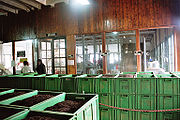
No artificial preservatives are added at any stage of the manufacturing process and sub-standard tea which fails to initially comply with standards is rejected regardless of the quantity and value. Finally, the teas are weighed and packed into tea chests or paper sacks and then given a close inspection. The tea is then sent to the local auction and transported to the tea brokering companies. At the stage of exporting the Sri Lanka Tea Board will check and sample each shipment after the completion of packing to ensure that the finest quality tea is exported and then it is finally shipped in various forms of packing to many parts of the world.
Cultivation areas
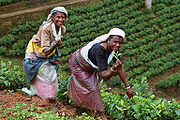
Badulla
Badulla , is the capital of Uva Province, Sri Lanka. Badulla is located 60 km southeast of Kandy, almost encircled by the Badulu Oya River, about 680 metres above sea level and is surrounded by picturesque hills and mountains, most of which have tea plantations.-Geography:It is located on the...
, Bandarawela
Bandarawela
Bandarawela is the second largest city in Badulla District which is 28 km away from Badulla. Due to higher altitude, Bandarawela has a mild weather condition throughout the year hence, it is popular among the citizens to spend the vacations with their family members...
and Haputale
Haputale
Haputale is a town in Badulla District, Sri Lanka. The elevation is 1431 m above the sea level. The area has a rich bio-diversity dense with numerous varieties of flora and fauna. The town has a cooler climate than its surroundings, due to its elevation. The Haputale pass allows views across the...
in Uva Province
Uva Province
Uva is Sri Lanka's second least populated province, with 1,187,335 people, created in 1896. It consists of two districts: Badulla බදුල්ල பதுளை and Moneragala මොනරාගල மொனராகல. The provincial capital is Badulla. Uva is bordered by Eastern, Southern and Central provinces...
, Galle
Galle
Galle is a city situated on the southwestern tip of Sri Lanka, 119 km from Colombo. Galle is the capital city of Southern Province of Sri Lanka and it lies in Galle District....
, Matara
Matara, Sri Lanka
Matara is a city on the southern coast of Sri Lanka, 160 km from Colombo. It is one of the largest cities in Sri Lanka. It was deeply affected by the Asian tsunami in December 2004.-History:...
and Mulkirigala in Southern Province
Southern Province, Sri Lanka
The Southern Province of Sri Lanka is a small geographic area consisting of the districts of Galle, Matara and Hambantota. The region is economically backward compared to the Western province, where the capital Sri Jayawardenapura-Kotte is situated...
, and Ratnapura
Ratnapura
- Floods :The town of Ratnapura is situated in the flooding plain of the river Kalu. The town experiences regular floods usually in the month of May. There is no large dam across the Kalu, so this leaves the city at the mercy of nature's forces every year. Several proposals have been made to reduce...
and Kegalle
Kegalle
Kegalle is a town in Sabaragamuwa Province of Sri Lanka. It is located on the Colombo - Kandy road. Its 48 miles/78 km away from Colombo and 24 Miles/40 km away from Kandy. It is the Capital City of the Kegalle District which is one of the two districts belonging to Sabaragamuwa province...
in Sabaragamuwa Province
Sabaragamuwa Province
Sabaragamuwa, is a province of Sri Lanka, and contains two main cities: Ratnapura and Kegalle. Sabaragamuwa University is in Belihuloya. It is named after its former indigenous inhabitants, namely the Sabara, an indic term for hunter gatherer tribes, a term seldom used in ancient Sri...
.
There are mainly six principal regions planting tea - Nuwara Eliya, Dimbula, Kandy Uda Pussellawa, Uva Province and Southern Province. Nuwara Eliya is an oval shaped plateau at an elevation of 6240 feet (1,902 m). Nuwara Eliya tea produces a unique flavour.
Dimbula was one the first areas to be planted in the 1870s. An elevation between 3500 to 5000 ft (1,066.8 to 1,524 m) defines this planting area. South-western monsoon rain and cold weather from January to March are determining factors of flavour. Eight subdistricts of Dimbula are Hatton
Hatton, Sri Lanka
Hatton , is a small town in Nuwara Eliya District of Central Province, Sri Lanka. It is known for its Ceylon tea plantations and industry. Hatton, which is locally administered by Hatton-Dickoya Urban Council, had 14,255 in population according to the census carried out in 2001. The town is...
/Dickoya
Dickoya
Dickoya is a town in Nuwara Eliya District in the Central Province of Sri Lanka. Dickoya forms Hatton-Dickoya urban council with Hatton....
, Bogawanthalawa, Upcot/Maskeliya, Patana/Kotagala, Nanu Oya/Lindula
Lindula
Lindula is a town and Urban Council in Nuwara Eliya District in the Central Province of Sri Lanka. With Talawakele it forms the Talawakele-Linduala urban council.-References:...
/Talawakele, Agarapatana, Pundaluoya and Ramboda.
Kandy is famous for Mid-grown tea. The first tea plantations were established here. Tea plantations are located at elevations of 2000 to 4000 ft (609.6 to 1,219.2 m). Pussellawa/Hewaheta and Matale
Matale
Matale is a town in the hill country of Sri Lanka, from Colombo and from Kandy. It is an area steeped in history and village living. The mayor of Matale is Hilmy Careem, as of May, 2006....
are the two main subdistricts of the region. Uda Pussellawa is situated between Nuwara Eliya and Uva Province. Northwest monsoons prevail in this region. Plantations near Nuwara Eliya have a range of rosy teas. The two subdistricts are Maturata and Ragala/Halgranoya.
Uva area's teas have quite a distinctive flavour and are widely used for blends. The elevation of tea plantations range from 3000 to 5000 ft (914.4 to 1,524 m). Being a large district, Uva has a number of subdistricts, Malwatte/Welimada
Welimada
-Administration:The Welimada city is now administered by the Welimada Divisional Council.Notable government institutions include:* Divisional Secretariat* Police Station* Government Hospital-Places of interest:*Divurumwela Old Temple*Sthripura Cave...
, Demodara/Hali-Ela/Badulla, Passara/Lunugala, Madulsima, Ella/Namunukula
Namunukula
Namunukula is the name of a mountain range in Sri Lanka's province of Uva. Its main peak is 6600 feet high. The name means "Nine Peaks". It also the name of a town near it which is sometimes called Namunukula Town .-Further reading:...
, Bandarawela/Poonagala, Haputale, and Koslanda/Haldummulla
Haldummulla
Haldummulla is a town in Sri Lanka. It is located in Badulla District of Uva Province, Sri Lanka.- Attraction :*Bambarakanda Falls *Ohiya and Horton Plains via Kalupahana and Udaweriya Estate- Prehistoric burial ground :...
.
Low-grown tea mainly originates from southern Sri Lanka. These teas are grown from sea level to 2000 ft (610 m), and thrive in fertile soils and warm conditions. These areas are spread across four main subdistricts, Ratnapura/Balangoda
Balangoda
Balangoda is a town in Sabaragamuwa Province of Sri Lanka. Its 143 km away from Colombo and 43 km away from Ratnapura. It is the one of biggest towns of the Ratnapura District which is one of the two districts belonging to Sabaragamuwa Province . According to the 2001 census Balangoda has a...
, Deniyaya, Matara, and Galle.
The high-grown tea thrives above 1200 m (3,937 ft) of elevation, warm climate and sloping terrain. Hence this type is common in the Central Highlands. Mid-grown tea is found in the 600–1200 m (1,968.5–3,937 ft) altitude range. Various types of tea are blended to obtain the required flavour and colour. Uva Province, and Nuwara Eliya, Dimbuala and Dickoya are the areas where mid-grown tea originates. Low-grown tea is stronger and less-subtle in taste and is produced in Galle, Matara and Ratnapura areas.
Registered tea production by elevation in Sri Lanka
Registered tea production in hectares and total square miles by elevation category in Sri Lanka, 1959-2000:| Year | High altitude hectares | Medium altitude hectares | Low altitude hectares | Total hectares | Total square miles |
|---|---|---|---|---|---|
| 1959 | 74,581 | 66,711 | 46,101 | 187,393 | 187393 hectares (723.5 sq mi) |
| 1960 | 79,586 | 69,482 | 48,113 | 197,181 | 197181 hectares (761.3 sq mi) |
| 1961 | 76,557 | 97,521 | 63,644 | 237,722 | 237722 hectares (917.8 sq mi) |
| 1962 | 76,707 | 97,857 | 64,661 | 239,225 | 239225 hectares (923.7 sq mi) |
| 1963 | 76,157 | 95,691 | 65,862 | 237,710 | 237710 hectares (917.8 sq mi) |
| 1964 | 81,538 | 92,281 | 65,759 | 239,578 | 239578 hectares (925 sq mi) |
| 1965 | 87,345 | 92,806 | 60,365 | 240,516 | 240516 hectares (928.6 sq mi) |
| 1966 | 87,514 | 93,305 | 60,563 | 241,382 | 241382 hectares (932 sq mi) |
| 1967 | 87,520 | 93,872 | 60,945 | 242,337 | 242337 hectares (935.7 sq mi) |
| 1968 | 81,144 | 99,359 | 61,292 | 241,795 | 241795 hectares (933.6 sq mi) |
| 1969 | 81,092 | 98,675 | 61,616 | 241,383 | 241383 hectares (932 sq mi) |
| 1970 | 77,549 | 98,624 | 65,625 | 241,798 | 241798 hectares (933.6 sq mi) |
| 1971 | 77,936 | 98,624 | 65,625 | 242,185 | 242185 hectares (935.1 sq mi) |
| Year | High altitude hectares | Medium altitude hectares | Low altitude hectares | Total hectares | Total square miles |
|---|---|---|---|---|---|
| 1972 | 77,639 | 98,252 | 65,968 | 241,859 | 241859 hectares (933.8 sq mi) |
| 1973 | 77,793 | 98,165 | 66,343 | 242,301 | 242301 hectares (935.5 sq mi) |
| 1974 | 77,693 | 97,875 | 66,622 | 242,190 | 242190 hectares (935.1 sq mi) |
| 1975 | 79,337 | 98,446 | 64,099 | 241,882 | 241882 hectares (933.9 sq mi) |
| 1976 | 79,877 | 94,338 | 66,363 | 240,578 | 240578 hectares (928.9 sq mi) |
| 1977 | 79,653 | 94,835 | 67,523 | 242,011 | 242011 hectares (934.4 sq mi) |
| 1978 | 79,628 | 95,591 | 68,023 | 243,242 | 243242 hectares (939.2 sq mi) |
| 1979 | 78,614 | 97,084 | 68,401 | 244,099 | 244099 hectares (942.5 sq mi) |
| 1980 | 78,786 | 96,950 | 68,969 | 244,705 | 244705 hectares (944.8 sq mi) |
| 1981 | 78,621 | 96,853 | 69,444 | 244,918 | 244918 hectares (945.6 sq mi) |
| 1982 | 77,769 | 96,644 | 67,728 | 242,141 | 242141 hectares (934.9 sq mi) |
| 1983 | 71,959 | 90,272 | 67,834 | 230,065 | 230065 hectares (888.3 sq mi) |
| 1984 | 74,157 | 90,203 | 63,514 | 227,874 | 227874 hectares (879.8 sq mi) |
| Year | High altitude hectares | Medium altitude hectares | Low altitude hectares | Total hectares | Total square miles |
|---|---|---|---|---|---|
| 1985 | 74,706 | 89,175 | 67,769 | 231,650 | 231650 hectares (894.4 sq mi) |
| 1986 | 73,206 | 85,216 | 64,483 | 222,905 | 222905 hectares (860.6 sq mi) |
| 1987 | 72,773 | 84,445 | 64,280 | 221,498 | 221498 hectares (855.2 sq mi) |
| 1988 | 72,901 | 84,227 | 64,555 | 221,683 | 221683 hectares (855.9 sq mi) |
| 1989 | 73,110 | 84,062 | 64,938 | 222,110 | 222110 hectares (857.6 sq mi) |
| 1990 | 73,138 | 83,223 | 65,397 | 221,758 | 221758 hectares (856.2 sq mi) |
| 1991 | 73,331 | 82,467 | 65,893 | 221,691 | 221691 hectares (856 sq mi) |
| 1992 | 74,141 | 85,510 | 62,185 | 221,836 | 221836 hectares (856.5 sq mi) |
| 1994 | 51,443 | 56,155 | 79,711 | 187,309 | 187309 hectares (723.2 sq mi) |
| 1995 | 51,443 | 56,155 | 79,711 | 187,309 | 187309 hectares (723.2 sq mi) |
| 1996 | 52,272 | 56,863 | 79,836 | 188,971 | 188971 hectares (729.6 sq mi) |
| 1997 | 51,444 | 58,155 | 79,711 | 189,310 | 189310 hectares (730.9 sq mi) |
| 1998 | 51,444 | 58,155 | 79,711 | 189,310 | 189310 hectares (730.9 sq mi) |
| 2000 | 52,272 | 56,863 | 79,836 | 188,971 | 188971 hectares (729.6 sq mi) |
Infrastructure

Traditional economy
Traditional economy is a catching-all term normally used to describe economic systems that pertain in societies with extensive subsistence agriculture. The term may also be used for any economy that falls outside of popular notions of market and command economies...
to a plantation economy
Plantation economy
A plantation economy is an economy which is based on agricultural mass production, usually of a few staple products grown on large farms called plantations. Plantation economies rely on the export of cash crops as a source of income...
. Many Europeans migrated to Sri Lanka as planters and Indian Tamils were brought to the island as estate laborers.
At the time of the Kandyan Kingdom
Kingdom of Kandy
Kingdom of Kandy was an important independent monarchy of Sri Lanka, located in the central and eastern portion of the island. It was founded in late 15th century and endured until the early 19th century...
it was policy not to build roads for reasons of strategic defense. Therefore when the plantations started, there was very little infrastructure in place in the hill country. Transporting the products to the Colombo port was a major problem. Therefore the Sri Lankan government undertook a massive program of road, rail and urban development in the plantation areas. Governor Sir Edward Barnes pioneered the building of roads. During his government, Captain Dawson
William Francis Dawson
Captain William Francis Dawson was a prominent road builder in British Ceylon . An Engineer attached to the Royal Engineers, he was given the task of building the Colombo - Kandy Road linking Colombo and Kandy. The job took its toll on Dawson, who died before it was completed. It would be the ...
, Major Skinner
Thomas Skinner (Ceylon)
Major Thomas Skinner, CMB was a prominent road builder in British Ceylon .-Biography:...
and others in the public works
Public works
Public works are a broad category of projects, financed and constructed by the government, for recreational, employment, and health and safety uses in the greater community...
department completed the Colombo-Kandy road
A 1 highway (Sri Lanka)
The A 1 road is an A-Grade trunk road in Sri Lanka. It connects the capital city of Colombo with Kandy.- History :...
.
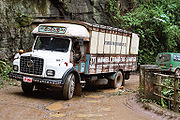
The railway was originally known as Ceylon Government Railways. The Main Line was constructed from Colombo to Ambepussa
Ambepussa
Ambepussa is a town in the Kegalla District in Sri Lanka Also one more Ambepussa in Gampaha District.- History :The first railroad tracks in Sri Lanka led from Colombo to Ambepussa .- Geography :...
, 54 km (34 mi) to the east. The railway was initially built to transport coffee and tea from the hill country to Colombo for export. For many years, transporting such goods was the main source of income on the line. The first train ran on 27 December 1864. The line was officially opened for traffic on 2 October 1865. The Main Line was extended in stages with service to Kandy in 1867, to Nawalapitiya
Nawalapitiya
Nawalapitiya is a town in the country of Sri Lanka. It is in the Kandy administrative district, 38 kilometers away from Kandy. The town is near Mahaweli Ganga. Nawalapitiya is a one of the well planned towns of SriLanka.It is well connected to all nearby important places by Bus...
in 1874, to Nanu Oya
Nanu Oya
Nanu Oya is a village in Sri Lanka. It is located within Central Province.-External links:*...
in 1885, to Bandarawela in 1894, and to Badulla in 1924.
Other lines were completed in due course to link the country: the Matale Line in 1880, the Coast Line in 1895, the Northern Line in 1905, the Mannar Line in 1914, the Kelani Valley Line in 1919, the Puttalam Line in 1926, and the Batticaloa and Trincomalee Lines in 1928. The rail lines helped develop what had hitherto been an undeveloped country. Today, instead of transporting tea to the ports, the railways primarily transport passengers, especially commuters to and from Colombo.
Ceylon black tea
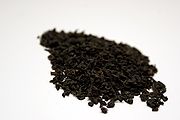
Citrus
Citrus is a common term and genus of flowering plants in the rue family, Rutaceae. Citrus is believed to have originated in the part of Southeast Asia bordered by Northeastern India, Myanmar and the Yunnan province of China...
, and is used both unmixed and in blends. It is grown on numerous estates which vary in altitude and taste.
Ceylon green tea
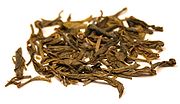
Green tea
Green tea is made solely from the leaves of Camellia sinensis that have undergone minimal oxidation during processing. Green tea originates from China and has become associated with many cultures throughout Asia. It has recently become more widespread in the West, where black tea is traditionally...
is mainly made from Assam
Assam
Assam , also, rarely, Assam Valley and formerly the Assam Province , is a northeastern state of India and is one of the most culturally and geographically distinct regions of the country...
ese tea stock. It is grown in Idalgashinna
Idalgashinna
Idalgashinna is a location in the Badulla District, Sri Lanka. The elevation is about above sea level. The famous Ceylon Tea and Ceylon Green Tea are grown in the area.. Idalgashinna is located within the Haputale-Namunukula mountain range....
in Uva Province. Ceylon green teas generally have the fuller body and the more pungent, rather malty, nutty flavour characteristic of the teas originating from Assamese seed stock. The tea grade names of most Ceylon green teas reflect traditional Chinese
China
Chinese civilization may refer to:* China for more general discussion of the country.* Chinese culture* Greater China, the transnational community of ethnic Chinese.* History of China* Sinosphere, the area historically affected by Chinese culture...
green tea nomenclature
Naming convention
A naming convention is a convention for naming things. The intent is to allow useful information to be deduced from the names based on regularities. For instance, in Manhattan, streets are numbered, with East-West streets being called "Streets" and North-South streets called "Avenues".-Use...
, such as tightly rolled gunpowder tea
Gunpowder tea
Gunpowder tea is a form of green Chinese tea produced in Zhejiang Province of China in which each leaf has been rolled into a small round pellet. It is believed to take its English name from the fact that the tea resembles blackpowder grains...
, or more open leaf tea grades with Chinese names like Chun Mee
Chun Mee tea
Chun Mee is a popular green tea. It has a dusty appearance and is generally more acidic and less sweet than other green teas. It was originally produced only in the Jiangxi province, but is now grown elsewhere.It is often referred as "9371"....
. Overall, the green teas from Sri Lanka have their own characteristics at this time - they tend to be darker in both the dry and infused leaf, and their flavour is richer; this could change in the future. As market demand preferences change, the Ceylon green tea producers start using more of the original Chinese, Indonesia
Indonesia
Indonesia , officially the Republic of Indonesia , is a country in Southeast Asia and Oceania. Indonesia is an archipelago comprising approximately 13,000 islands. It has 33 provinces with over 238 million people, and is the world's fourth most populous country. Indonesia is a republic, with an...
n, Japan
Japan
Japan is an island nation in East Asia. Located in the Pacific Ocean, it lies to the east of the Sea of Japan, China, North Korea, South Korea and Russia, stretching from the Sea of Okhotsk in the north to the East China Sea and Taiwan in the south...
ese and Brazil
Brazil
Brazil , officially the Federative Republic of Brazil , is the largest country in South America. It is the world's fifth largest country, both by geographical area and by population with over 192 million people...
ian seed base, which produces the very light and sparkling bright yellow colour and more delicate, sweet flavour with which most of the world market associates green teas. At this time, Sri Lanka remains a very minor producer of green teas and its green teas, like those of India and Kenya, remain an acquired taste.
Ceylon white tea

White tea
White tea is a lightly oxidized tea grown and harvested almost exclusively in China, primarily in the Fujian province.White tea comes from the delicate buds and younger leaves of the Chinese Camellia sinensis plant. These buds and leaves are allowed to wither in natural sunlight before they are...
, also known as "silver tips" is highly prized, and prices per kilogram are significantly higher than other teas. The tea was first grown at Nuwara Eliya near Adam's Peak
Adam's Peak
Sri Pada , is a tall conical mountain located in central Sri Lanka...
between 2200–2500 m (7,217.8–8,202.1 ft). The tea is grown, harvested and rolled by hand with the leaves dried and withered in the sun. It has a delicate, very light liquoring with notes of pine & honey and a golden coppery infusion. 'Virgin White Tea' is also grown at the Handunugoda Tea Estate
Handunugoda Tea Estate
Handunugoda Tea Estate is a family owned plantation in Tittagalla, Ahangama within the Southern Province, Sri Lanka.-Estate:The estate is in extent and comprises of tea. The balance plantation is of rubber, cinnamon and coconut. There is a well equipped tea factory on the property. Most machines...
near Galle in the south of Sri Lanka.
International market and prices
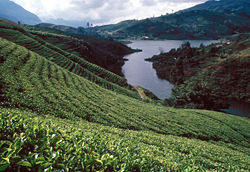
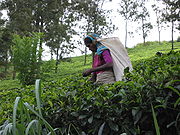
In 2003 the government in Sri Lanka sought to protect the country's near $700 million tea industry during the 2003 Iraq War. The war in Iraq caused panic, particularly among small-scale Sri Lankan tea growers who represent 69% of all tea production in Sri Lanka, who demanded that the government bail them out. Iraq buys up to 15% of Sri Lanka's tea, and a third of this would enter the country illegally on small boats from Dubai
Dubai
Dubai is a city and emirate in the United Arab Emirates . The emirate is located south of the Persian Gulf on the Arabian Peninsula and has the largest population with the second-largest land territory by area of all the emirates, after Abu Dhabi...
as well as into neighbouring countries such as Iran
Iran
Iran , officially the Islamic Republic of Iran , is a country in Southern and Western Asia. The name "Iran" has been in use natively since the Sassanian era and came into use internationally in 1935, before which the country was known to the Western world as Persia...
. Exporters called for the government to assist them with concessionary bank loans and some tea factory owners in Sri Lanka demanded a moratorium on electricity bill payments. Prices fell in Colombo as a result of the crisis. Plantations Minister Lakshman Kiriella
Lakshman Kiriella
Lakshman Bandara Kiriella, MP is a Sri Lankan politician and lawyer. He is a current Member of Parliament and was the former Minister of Plantation Industries in Sri Lanka. Tea production in Sri Lanka is a crucial component of the Sri Lankan economy, employing some million workers. He was also the...
responded, saying, "tea promoters would receive diplomatic postings in Sri Lankan missions abroad to give an extra push to the island's 'green gold'". $15 million was funded to promote Sri Lankan brands on international markets during the Iraq war.
Later in 2003 the island suffered severe floods in the lower growing tea areas of Sri Lanka. However production still increased slightly by 1.3 percent to 309000 tonnes (340,614 ST) in 2004, as the crop recovered. Kenya surpassed Sri Lanka as the largest exporter of tea with an 8.9 percent growth in exports for the year totalling nearly 293000 tonnes (322,977 ST). In 2004 actual tea production in Kenya had increased by more than 11 percent to reach 328000 tonnes (361,558 ST), as a result of a good harvesting season, wealth and improved processing facilities.
The Sri Lankan tea industry continued to grow into 2007 and 2008. Tea production hit a record 318.47 million kilograms (318.47 kilograms (702.1 lb) million lbs) in 2008, up from 305.2 million kilograms (305.2 kilograms (672.9 lb) million lbs) produced in 2007. In 2008 export earnings struck a record high of $1.23 billion for the full year, up from $1.02 billion in 2007. However, more recently the industry, like many others across the world, has suffered from the contemporary global financial crisis. The Sri Lanka Tea Board revealed in March 2009 that the industry had suffered a 30 percent drop in overseas sales in January 2009. The downfall in tea production has been felt not only by Sri Lanka but by all the major tea producing nations. Total volume of tea exports fell 25 percent to 17.76 million kilograms (17.76 kilograms (39.2 lb) million lbs) and sales from tea shipments fell to 6.9 billion rupees ($61.37 million ) in January, compared to 9.8 billion rupees in the same period a year earlier. Prices have collapsed to an average of 2.65 $/kg from record highs of 4.26 $/kg experienced between January and September 2008.
Drought
Drought
A drought is an extended period of months or years when a region notes a deficiency in its water supply. Generally, this occurs when a region receives consistently below average precipitation. It can have a substantial impact on the ecosystem and agriculture of the affected region...
has also been a contributing factor to the 2009 crisis in Sri Lankan tea as it has in India. The Sri Lankan industry has been hit worst though with a fall of 8.7 million kg (8.7 kilograms (19.2 lb) million lbs) produced in January 2009.
Main destination of Sri Lankan teas
The most important foreign markets for Sri Lankan tea are the former Soviet bloc countries of the CISCommonwealth of Independent States
The Commonwealth of Independent States is a regional organization whose participating countries are former Soviet Republics, formed during the breakup of the Soviet Union....
, the United Arab Emirates
United Arab Emirates
The United Arab Emirates, abbreviated as the UAE, or shortened to "the Emirates", is a state situated in the southeast of the Arabian Peninsula in Western Asia on the Persian Gulf, bordering Oman, and Saudi Arabia, and sharing sea borders with Iraq, Kuwait, Bahrain, Qatar, and Iran.The UAE is a...
, Russia
Russia
Russia or , officially known as both Russia and the Russian Federation , is a country in northern Eurasia. It is a federal semi-presidential republic, comprising 83 federal subjects...
, Syria
Syria
Syria , officially the Syrian Arab Republic , is a country in Western Asia, bordering Lebanon and the Mediterranean Sea to the West, Turkey to the north, Iraq to the east, Jordan to the south, and Israel to the southwest....
, Turkey
Turkey
Turkey , known officially as the Republic of Turkey , is a Eurasian country located in Western Asia and in East Thrace in Southeastern Europe...
, Iran
Iran
Iran , officially the Islamic Republic of Iran , is a country in Southern and Western Asia. The name "Iran" has been in use natively since the Sassanian era and came into use internationally in 1935, before which the country was known to the Western world as Persia...
, Saudi Arabia
Saudi Arabia
The Kingdom of Saudi Arabia , commonly known in British English as Saudi Arabia and in Arabic as as-Sa‘ūdiyyah , is the largest state in Western Asia by land area, constituting the bulk of the Arabian Peninsula, and the second-largest in the Arab World...
, Iraq
Iraq
Iraq ; officially the Republic of Iraq is a country in Western Asia spanning most of the northwestern end of the Zagros mountain range, the eastern part of the Syrian Desert and the northern part of the Arabian Desert....
, the UK, Egypt
Egypt
Egypt , officially the Arab Republic of Egypt, Arabic: , is a country mainly in North Africa, with the Sinai Peninsula forming a land bridge in Southwest Asia. Egypt is thus a transcontinental country, and a major power in Africa, the Mediterranean Basin, the Middle East and the Muslim world...
, Libya
Libya
Libya is an African country in the Maghreb region of North Africa bordered by the Mediterranean Sea to the north, Egypt to the east, Sudan to the southeast, Chad and Niger to the south, and Algeria and Tunisia to the west....
and Japan
Japan
Japan is an island nation in East Asia. Located in the Pacific Ocean, it lies to the east of the Sea of Japan, China, North Korea, South Korea and Russia, stretching from the Sea of Okhotsk in the north to the East China Sea and Taiwan in the south...
.
The most important foreign markets for Sri Lankan tea are as follows, in terms of millions of kilograms and millions of pounds imported. The figures were recorded in 2000:
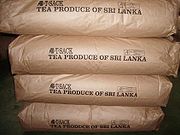
| Country | | Million kilograms | | Million pounds | | Percent of total |
|---|---|---|---|
| CIS Countries Commonwealth of Independent States The Commonwealth of Independent States is a regional organization whose participating countries are former Soviet Republics, formed during the breakup of the Soviet Union.... |
57.6 | 57.6 kilograms (127 lb) | |
| UAE United Arab Emirates The United Arab Emirates, abbreviated as the UAE, or shortened to "the Emirates", is a state situated in the southeast of the Arabian Peninsula in Western Asia on the Persian Gulf, bordering Oman, and Saudi Arabia, and sharing sea borders with Iraq, Kuwait, Bahrain, Qatar, and Iran.The UAE is a... |
48.1 | 48.1 kilograms (106 lb) | |
| Russia Russia Russia or , officially known as both Russia and the Russian Federation , is a country in northern Eurasia. It is a federal semi-presidential republic, comprising 83 federal subjects... |
46.1 | 46.1 kilograms (101.6 lb) | |
| Syria Syria Syria , officially the Syrian Arab Republic , is a country in Western Asia, bordering Lebanon and the Mediterranean Sea to the West, Turkey to the north, Iraq to the east, Jordan to the south, and Israel to the southwest.... |
21.5 | 21.5 kilograms (47.4 lb) | |
| Turkey Turkey Turkey , known officially as the Republic of Turkey , is a Eurasian country located in Western Asia and in East Thrace in Southeastern Europe... |
20.3 | 20.3 kilograms (44.8 lb) | |
| Iran Iran Iran , officially the Islamic Republic of Iran , is a country in Southern and Western Asia. The name "Iran" has been in use natively since the Sassanian era and came into use internationally in 1935, before which the country was known to the Western world as Persia... |
12.5 | 12.5 kilograms (27.6 lb) | |
| Saudi Arabia Saudi Arabia The Kingdom of Saudi Arabia , commonly known in British English as Saudi Arabia and in Arabic as as-Sa‘ūdiyyah , is the largest state in Western Asia by land area, constituting the bulk of the Arabian Peninsula, and the second-largest in the Arab World... |
11.4 | 11.4 kilograms (25.1 lb) | |
| Iraq Iraq Iraq ; officially the Republic of Iraq is a country in Western Asia spanning most of the northwestern end of the Zagros mountain range, the eastern part of the Syrian Desert and the northern part of the Arabian Desert.... |
11.1 | 11.1 kilograms (24.5 lb) | |
| UK United Kingdom The United Kingdom of Great Britain and Northern IrelandIn the United Kingdom and Dependencies, other languages have been officially recognised as legitimate autochthonous languages under the European Charter for Regional or Minority Languages... |
10.2 | 10.2 kilograms (22.5 lb) | |
| Egypt Egypt Egypt , officially the Arab Republic of Egypt, Arabic: , is a country mainly in North Africa, with the Sinai Peninsula forming a land bridge in Southwest Asia. Egypt is thus a transcontinental country, and a major power in Africa, the Mediterranean Basin, the Middle East and the Muslim world... |
10.1 | 10.1 kilograms (22.3 lb) | |
| Libya Libya Libya is an African country in the Maghreb region of North Africa bordered by the Mediterranean Sea to the north, Egypt to the east, Sudan to the southeast, Chad and Niger to the south, and Algeria and Tunisia to the west.... |
10.0 | 10 kilograms (22 lb) | |
| Japan Japan Japan is an island nation in East Asia. Located in the Pacific Ocean, it lies to the east of the Sea of Japan, China, North Korea, South Korea and Russia, stretching from the Sea of Okhotsk in the north to the East China Sea and Taiwan in the south... |
8.3 | 8.3 kilograms (18.3 lb) | |
| Germany Germany Germany , officially the Federal Republic of Germany , is a federal parliamentary republic in Europe. The country consists of 16 states while the capital and largest city is Berlin. Germany covers an area of 357,021 km2 and has a largely temperate seasonal climate... |
5.0 | 5 kilograms (11 lb) | |
| Others | 23.7 | 23.7 kilograms (52.2 lb) | |
| Total | 288 | 288 kilograms (634.9 lb) |
Branding and grading
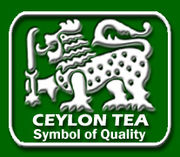
Tea produced in Sri Lanka carries the "Lion Logo" on its packages, which indicates that the tea was produced in Sri Lanka. The use of the Lion Logo is closely monitored by the Sri Lanka Tea Board, which is the governing body of the tea industry in Sri Lanka. If a tea producer demands to use the Lion Logo on his packaging, they need to gain permission from the Sri Lanka Tea Board. The tea board then performs a strict inspection procedure, the passing of which allows the producer to use the logo, along with the "Pure Ceylon Tea - Packed in Sri Lanka" slogan on their tea packaging. Each and every consignment is thoroughly inspected by Sri Lanka Tea board officers before being shipped. Therefore the Lion Logo and the wording is indeed the assurance of the origin of the tea and of its quality.
Most of the Sri Lankan tea exporters now focus on adding more value to the exports rather than exporting raw tea. The name "Ceylon Tea" or "Sri Lankan tea" is still regarded as a sign of quality throughout the world.
Grading names which are used in Sri Lanka to classify its teas are not by any means the indication of its quality but indicate its size and appearance. Mainly there are two categories. They are "Leaf grades" and "Smaller broken grades". Leaf grades refers to the size and appearance of the teas that were produced during Sri Lanka's colonial era (which are still being used) and the other refers to the modern tea style and appearance.
Ceylon Tea Museum
The Sri Lanka Tea Board opened a Tea Museum in Hantana, Kandy in 2001. Although exhibits are not abundant they do provide a valuable insight into how tea was manufactured in the early days. Old machinery, some dating back more than a century, has been lovingly restored to working order. The first exhibit that greets visitors is the Ruston and Hornsby developed diesel engine, as well as other liquid fuel engines, located in the Engine Room on the ground floor of the museum. Power for the tea estates were also obtained by water driven turbines.The museum's "Rolling Room" offers a glimpse into the development of manufacturing techniques, with its fascinating collection of rollers. Here the showpiece is the manually operated 'Little Giant Tea Roller'.
Periodontal research
Beginning in the early 1970s, two researchers from the National Institute of Dental Research in BethesdaBethesda
Bethesda , originally referring to the Pool of Bethesda in Jerusalem , may also refer to:-United States:*Bethesda, Davidson County, North Carolina...
, Maryland
Maryland
Maryland is a U.S. state located in the Mid Atlantic region of the United States, bordering Virginia, West Virginia, and the District of Columbia to its south and west; Pennsylvania to its north; and Delaware to its east...
conducted a series of research projects in which they arranged a longitudinal study
Longitudinal study
A longitudinal study is a correlational research study that involves repeated observations of the same variables over long periods of time — often many decades. It is a type of observational study. Longitudinal studies are often used in psychology to study developmental trends across the...
group of a large number of Tamil
Tamil people
Tamil people , also called Tamils or Tamilians, are an ethnic group native to Tamil Nadu, India and the north-eastern region of Sri Lanka. Historic and post 15th century emigrant communities are also found across the world, notably Malaysia, Singapore, Mauritius, South Africa, Australia, Canada,...
tea laborers who worked at the Dunsinane and Harrow Tea Estates, 50 miles from Kandy. This landmark study was possible because the population of tea laborers were known to have never employed any conventional oral hygiene
Oral hygiene
Teeth cleaning is part of oral hygiene and involves the removal of dental plaque from teeth with the intention of preventing cavities , gingivitis, and periodontal disease. People routinely clean their own teeth by brushing and interdental cleaning, and dental hygienists can remove hardened...
measures, thereby providing some insight into the natural history of periodontal disease
Periodontal disease
Periodontitis is a set of inflammatory diseases affecting the periodontium, i.e., the tissues that surround and support the teeth. Periodontitis involves progressive loss of the alveolar bone around the teeth, and if left untreated, can lead to the loosening and subsequent loss of teeth...
in man.
See also
- James Taylor (Ceylon)James Taylor (Ceylon)James Taylor was a British citizen who introduced the tea plantation in Sri Lanka . He arrived to Sri Lanka in 1852 and settled down in Loolecondera estate in Kandy. He lived in Sri Lanka more than half of his lifetime 57 years until his death...
- LooleconderaLooleconderaThe Loolecondera estate is the first tea plantation estate in Sri Lanka started on 1867 by the Scottish nationalist James Taylor , it is situated in Kandy, Sri Lanka.-James Taylor and Loolecondera:...
- Thomas LiptonThomas LiptonSir Thomas Johnstone Lipton, 1st Baronet, KCVO was a Scotsman of Ulster-Scots parentage who was a self-made man, merchant, and yachtsman. He created the Lipton tea brand and was the most persistent challenger in the history of the America's Cup.-Parentage and childhood:Lipton was born in Glasgow...
- Handunugoda Tea EstateHandunugoda Tea EstateHandunugoda Tea Estate is a family owned plantation in Tittagalla, Ahangama within the Southern Province, Sri Lanka.-Estate:The estate is in extent and comprises of tea. The balance plantation is of rubber, cinnamon and coconut. There is a well equipped tea factory on the property. Most machines...
External links
- Taylor, Lipton and the Birth of Ceylon Tea
- Jafferjee & Sons Exporters of Pure Ceylon Tea
- Akbar Tea official website
- Helping Sri Lanka's Forgotten Tea Workers Catholic Relief Services
- Documentary on the tea and rubber plantations of Sri Lanka: To Escape or Maximise? The estate workers' dilemma, Center for Poverty Analysis (CEPA), 2008
- Official web site of the Sri Lanka Tea Board

